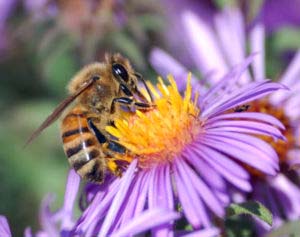“Experimental results show that the environmental release of particles containing neonicotinoids can produce high exposure levels for bees, with lethal effects compatible with colony losses phenomena observed by beekeepers.”
- Andrea Tappar, Ph.D., Univ. of Padua, Italy

March 17, 2012 Padova, Italy - Back in February 2007, at the beginning of the mysterious Colony Collapse Disorder (CCD), the first honey bee grower that Earthfiles interviewed was Dave Hackenberg, owner of Hackenberg Apiaries in Lewisburg, Pennsylvania. Dave and his family had been raising honey bees for half a century when he was shocked to find in the winter of 2006 to 2007 that nearly 80% of his honey bees disappeared or died. For the first time in his life, Dave went into debt to stay in business.
Click here to subscribe and get instant access to read this report.
Click here to check your existing subscription status.
Existing members, login below:
© 1998 - 2025 by Linda Moulton Howe.
All Rights Reserved.

